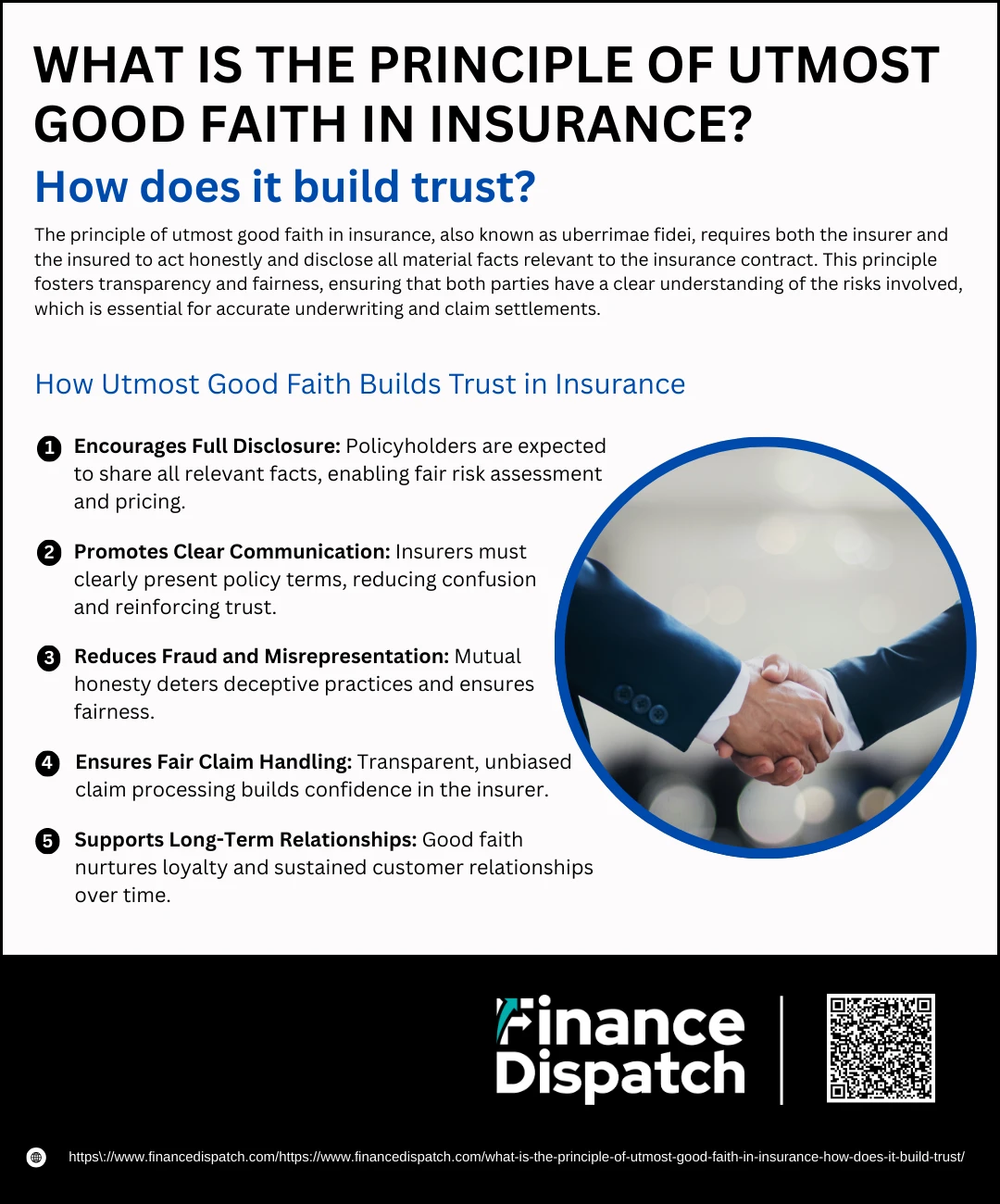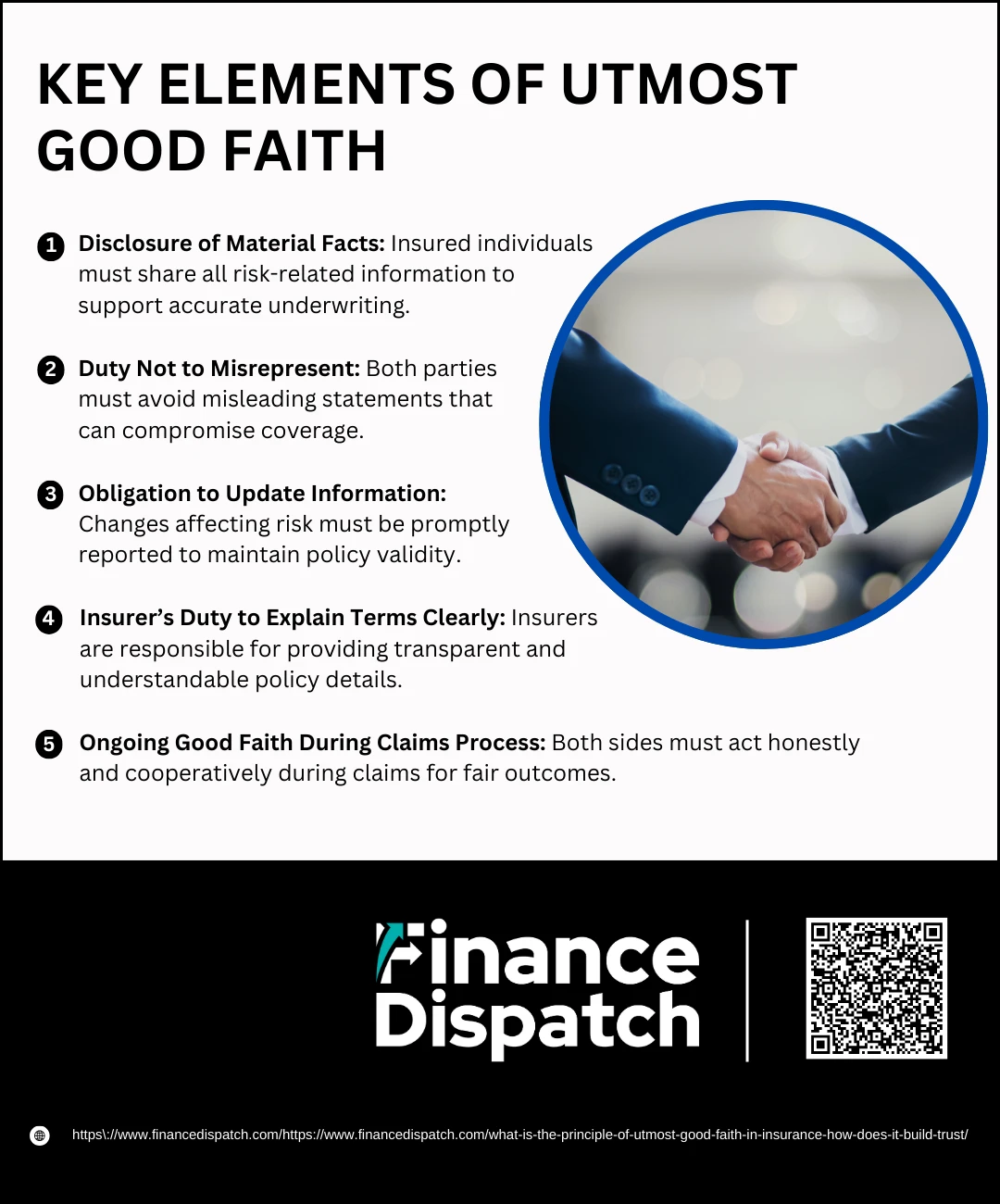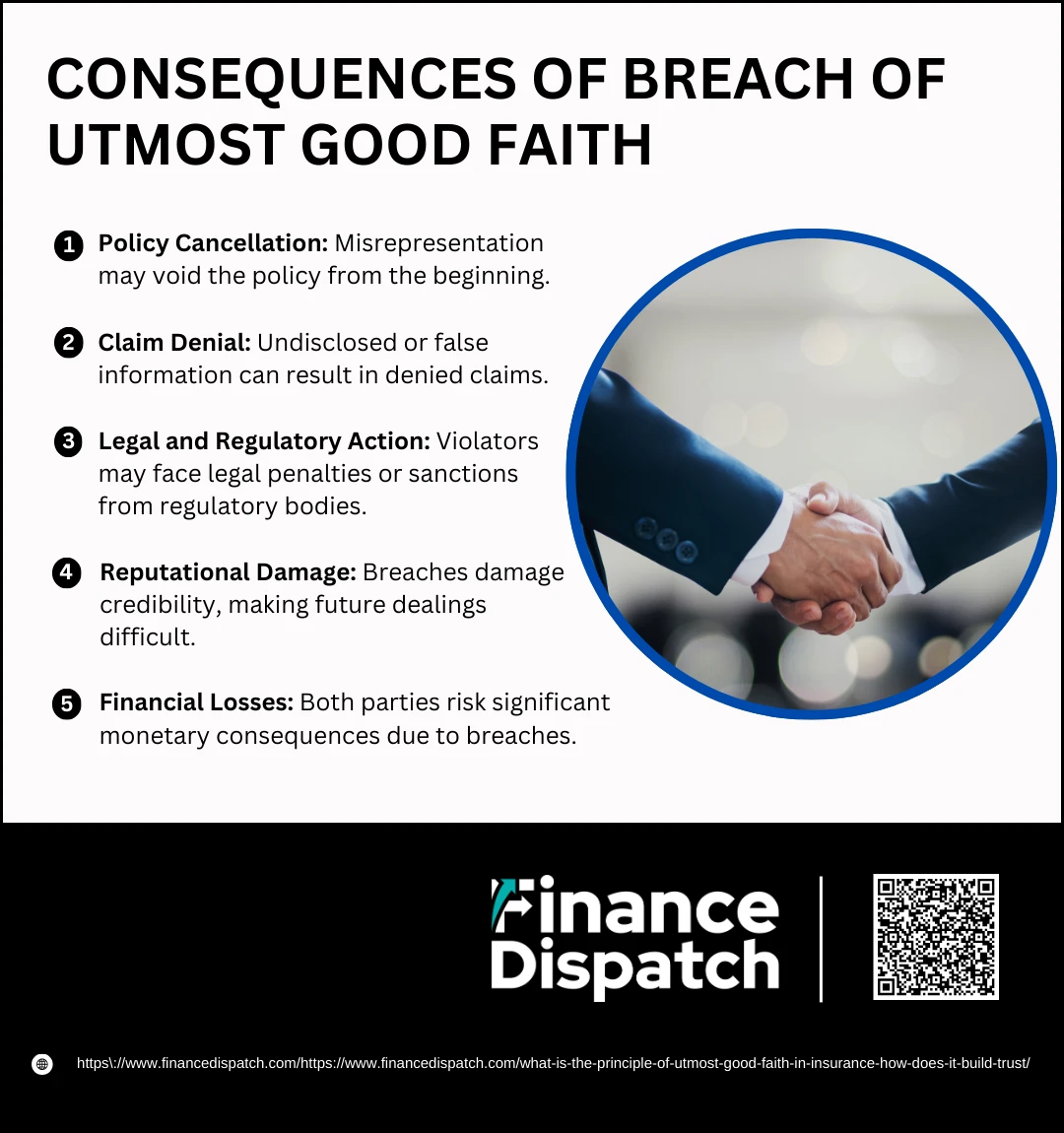Insurance is built on a promise—one that relies not just on contracts, but on mutual trust. At the heart of every insurance agreement lies the principle of utmost good faith, a doctrine that requires both the insurer and the insured to act with complete honesty and transparency. This principle, known in legal terms as uberrimae fidei, ensures that all material facts are fully disclosed before and during the policy term. By eliminating deception and fostering openness, it forms the foundation of trust essential for fair underwriting, smooth claim processing, and long-lasting client-insurer relationships. In this article, we explore what utmost good faith truly means, its legal basis, and how it actively cultivates trust in the world of insurance.
What is the principle of utmost good faith in insurance?
The principle of utmost good faith in insurance, derived from the Latin term uberrimae fidei, is a fundamental doctrine requiring both the insurer and the insured to act honestly and disclose all material facts relevant to the insurance contract. This principle goes beyond the general duty of good faith found in standard contracts; it places a heightened responsibility on both parties to share information that could influence decisions about underwriting, policy terms, or claims. For the insured, this means providing truthful details about risks, health conditions, or previous claims history. For the insurer, it involves clearly explaining policy terms, exclusions, and coverage limits. By ensuring full transparency on both sides, the principle aims to create a fair and balanced relationship, reducing the chances of disputes and strengthening the integrity of insurance agreements.
 How Utmost Good Faith Builds Trust in Insurance
How Utmost Good Faith Builds Trust in Insurance
Trust is the cornerstone of any insurance contract, and the principle of utmost good faith plays a pivotal role in establishing and maintaining that trust. This principle requires both the insurer and the insured to be completely honest and transparent about all relevant facts that could influence the outcome of the policy—whether it’s during the application, underwriting, or claims process. By adhering to this doctrine, both parties create a foundation of mutual respect and accountability. Let’s explore how utmost good faith strengthens trust throughout the insurance lifecycle.
1. Encourages Full Disclosure
Policyholders are expected to disclose all material facts honestly—such as medical history, previous claims, or hazardous conditions. This transparency ensures that insurers can properly assess risk and price the policy fairly. When policyholders feel safe to share sensitive information without fear of unfair denial, it builds a deeper sense of trust in the insurer’s process.
2. Promotes Clear Communication
Insurers are obligated to present policy documents in a clear, understandable format without hiding exclusions in fine print. By providing transparent information upfront, insurers help policyholders make informed decisions. This clarity eliminates confusion and reinforces confidence in the insurer’s professionalism and intent.
3. Reduces Fraud and Misrepresentation
When both parties are bound by a legal and ethical duty to be truthful, there’s less room for deceptive practices. Policyholders are less likely to conceal risks, and insurers are less likely to deny claims unfairly. This environment of honesty minimizes conflicts and ensures that coverage is based on facts, not assumptions or tricks.
4. Ensures Fair Claim Handling
At the time of a claim, an insurer is expected to process it quickly, fairly, and without bias. If a claim is denied, the insurer must clearly explain the reasons. When policyholders see that insurers uphold their end of the bargain during difficult times, it reinforces faith in the system and their continued loyalty.
5. Supports Long-Term Relationships
Trust doesn’t end when a policy is issued—it’s built over time through consistent and ethical behavior. When insurers and policyholders both act in good faith, it fosters lasting relationships, positive word-of-mouth, and long-term customer retention. Clients are more likely to renew and recommend insurers who are perceived as fair and trustworthy.
 Key Elements of Utmost Good Faith
Key Elements of Utmost Good Faith
Utmost good faith isn’t just a concept—it’s a binding principle that governs the very foundation of an insurance contract. Both the insurer and the insured are legally and ethically expected to uphold this principle by being fully honest, transparent, and proactive in sharing information. When these key elements are followed, they prevent misunderstandings, reduce the risk of disputes, and promote a fair and functional insurance system. Below are the major components that bring the principle of utmost good faith to life.
1. Disclosure of Material Facts
Material facts are any details that could influence the insurer’s decision to issue a policy, calculate the premium, or determine coverage limits. The insured is obligated to disclose all such facts—even those not specifically asked—because they affect the insurer’s risk assessment. For example, not disclosing a pre-existing medical condition in a health policy application could lead to claim denial later. This duty to disclose applies not only at the time of application but also throughout the policy term.
2. Duty Not to Misrepresent
Both parties must avoid making misleading statements. Misrepresentation can occur intentionally (fraudulent) or unintentionally (innocent), but both can have serious consequences. If the insured exaggerates the value of insured property or conceals a hazardous activity, it may lead to policy cancellation or claim rejection. Similarly, if an insurer misrepresents coverage to attract business, it violates trust and may face legal penalties.
3. Obligation to Update Information
Insurance is a dynamic relationship. If the insured’s circumstances change during the policy period—such as a change in health condition, occupation, or risk exposure—these updates must be communicated to the insurer. Failing to do so may be considered a breach of good faith, especially if the change affects the validity of the coverage or the claim eligibility.
4. Insurer’s Duty to Explain Terms Clearly
The responsibility to uphold good faith isn’t just on the insured. The insurer must also provide clear, understandable, and transparent policy terms. Ambiguous exclusions or complex jargon hidden in fine print can erode the trust of policyholders. Insurers should ensure that customers know exactly what is covered, what’s excluded, and how to make a claim.
5. Ongoing Good Faith During Claims Process
Good faith must continue beyond policy issuance. During the claims process, the insured should report the claim truthfully, submit all required documentation, and cooperate during investigations. In turn, the insurer must assess the claim fairly, communicate clearly, and settle valid claims without unnecessary delay or excuses. When both sides act with integrity, it reinforces a long-term relationship based on trust and reliability.
Real-World Examples of the Principle
The principle of utmost good faith isn’t just a theoretical concept—it plays out every day in real insurance transactions. When either the insurer or the insured fails to act in good faith, the consequences can be significant, from claim denials to policy cancellations. By examining real-world examples, we can better understand how this principle functions in practice and why it’s essential for maintaining fairness and trust in insurance.
1. Non-Disclosure of Health Condition
Mr. Rishi applied for a term life insurance policy but did not disclose his smoking and alcohol consumption habits. These habits significantly increase health risks. Once the insurer discovered this omission after a claim was filed, the policy was cancelled, and the claim was denied.
2. Misrepresentation of Business Risk
Mr. Akshay secured a fire insurance policy for his warehouse but falsely claimed it only stored non-hazardous goods. In reality, the warehouse stored flammable chemicals. After a fire incident, the insurer discovered the misrepresentation and refused the claim, citing a breach of utmost good faith.
3. Failure to Update Information
A factory owner initially insured his premises for storing safe materials. Months later, he began storing hazardous chemicals but failed to inform the insurer. When a fire broke out, the insurer rejected the claim due to non-disclosure of the increased risk.
4. Unclear Policy Terms by Insurer
In a major insurance dispute following the 9/11 attacks, the insurer tried to apply two deductibles—one for each tower. However, the policy did not clearly define how such scenarios would be treated. The court ruled in favor of the insured, citing the insurer’s failure to explain the policy terms clearly.
5. Transparent Risk Adjustment
In another case, a policyholder updated their insurer about purchasing new high-risk machinery for their factory. The insurer reassessed the risk, increased the premium, and maintained coverage. This transparent exchange upheld utmost good faith on both sides.
 Consequences of Breach of Utmost Good Faith
Consequences of Breach of Utmost Good Faith
When either the insurer or the insured fails to uphold the principle of utmost good faith, the consequences can be serious and far-reaching. This principle is a legal and ethical requirement—violating it doesn’t just damage trust; it can also lead to financial losses, legal disputes, and damaged reputations. Whether through misrepresentation, non-disclosure, or unclear communication, breaching this principle can unravel the very foundation of an insurance contract. Below are the key consequences for both parties involved:
1. Policy Cancellation
If an insurer discovers that the insured has withheld or misrepresented material facts, the policy can be voided from inception. This means the policy is treated as if it never existed, leaving the insured without coverage—even if premiums were paid.
2. Claim Denial
A breach of good faith often results in claim rejection. If material facts weren’t disclosed or were falsely stated, the insurer may refuse to pay out, even for legitimate claims related to the withheld information.
3. Legal and Regulatory Action
Regulatory authorities like the IRDAI in India can take action against insurers for unfair practices or failure to communicate clearly. Insured individuals who commit fraud may also face penalties or be blacklisted by insurers.
4. Reputational Damage
Insurers that breach good faith—by using misleading terms or unfairly denying claims—risk losing customer trust and facing public backlash. Policyholders who act dishonestly may find it difficult to secure future coverage from other insurers.
5. Financial Losses
Both parties stand to lose financially. The insured may suffer uncovered losses or out-of-pocket expenses due to denied claims. Insurers may face lawsuits, fines, or higher operational costs related to disputes and investigations.
Comparison: Utmost Good Faith vs. Caveat Emptor (Let the Buyer Beware)
In the world of contracts, different principles govern how parties are expected to behave. In insurance, the doctrine of utmost good faith demands full honesty and disclosure from both sides. In contrast, most commercial transactions are governed by the principle of caveat emptor, or “let the buyer beware,” which places the burden on the buyer to investigate the product before purchase. Understanding the difference between these two doctrines highlights why insurance contracts are unique and held to higher ethical standards.
Here’s a table comparing utmost good faith and caveat emptor:
| Aspect | Utmost Good Faith | Caveat Emptor |
| Meaning | Both parties must disclose all material facts honestly. | Buyer assumes the risk and must inspect before buying. |
| Applicability | Common in insurance contracts. | Common in general commercial transactions. |
| Duty to Disclose | Shared by both insurer and insured. | Primarily rests with the buyer; seller has fewer duties. |
| Legal Obligation | Failure to disclose can void the contract. | Buyer must prove seller fraud to void the contract. |
| Risk of Non-Disclosure | High—leads to denied claims or policy cancellation. | Low—buyer bears the risk if they fail to investigate. |
| Objective | Promote transparency and trust. | Encourage due diligence by the buyer. |
| Typical Use Case | Insurance, fiduciary contracts. | Sale of goods, property transactions. |
Conclusion
The principle of utmost good faith stands as the ethical backbone of every insurance contract, demanding honesty, transparency, and full disclosure from both the insurer and the insured. Unlike standard commercial transactions governed by caveat emptor, insurance relies heavily on mutual trust, as one party often possesses more information about the risk than the other. By adhering to this principle, insurers can make accurate risk assessments, and policyholders can trust that their claims will be handled fairly. Breaching this trust not only jeopardizes the validity of the contract but also undermines the entire purpose of insurance as a safeguard against uncertainty. In a world where trust is hard-earned and easily broken, utmost good faith ensures that the foundation of every insurance relationship remains solid and secure.



